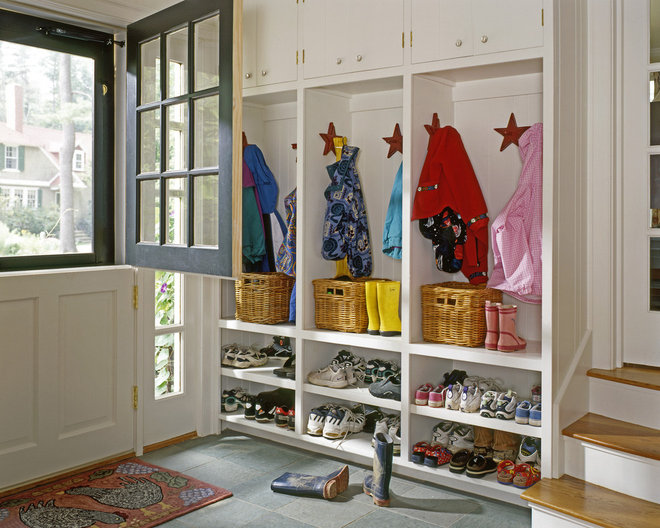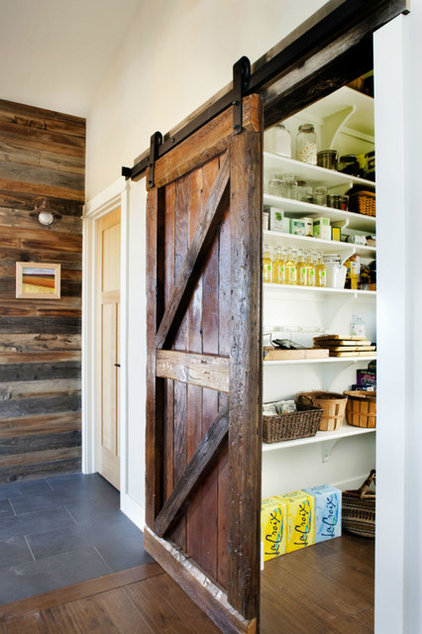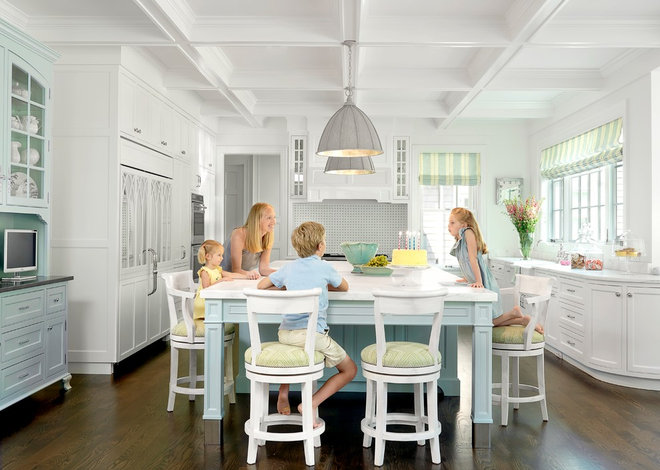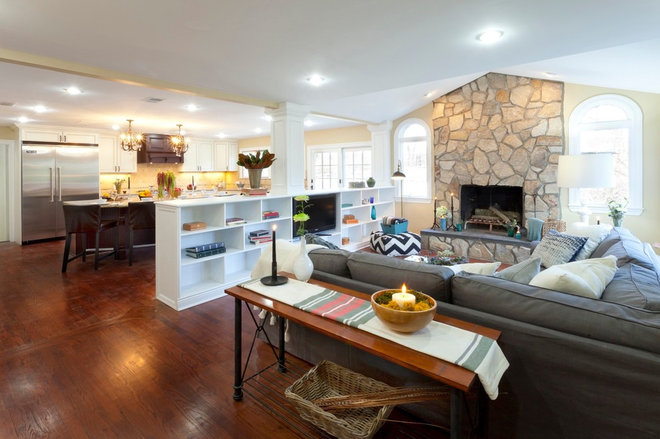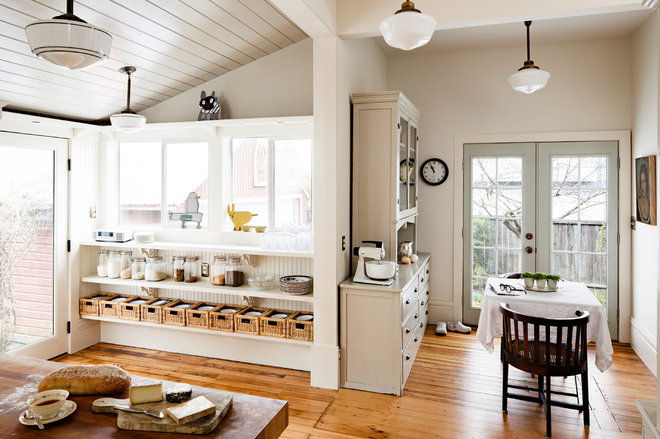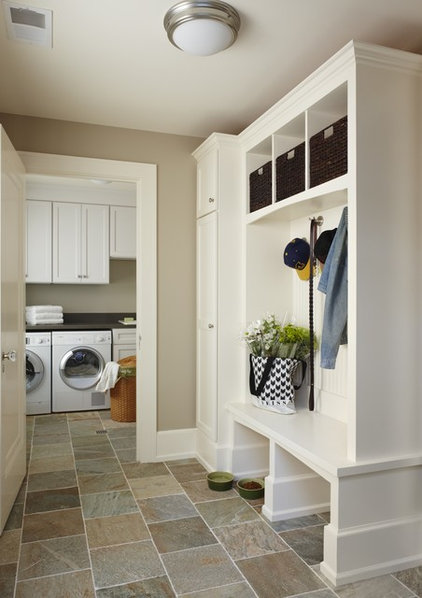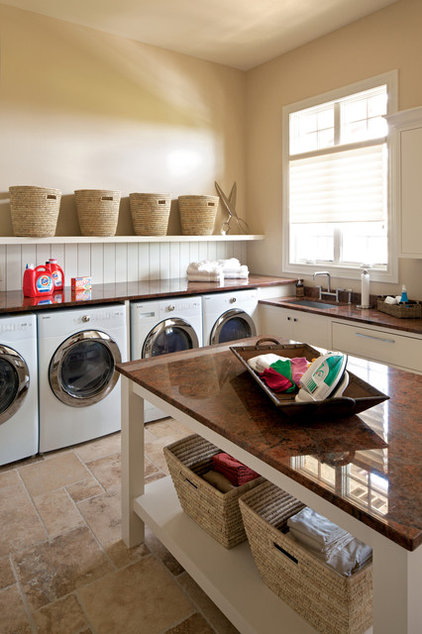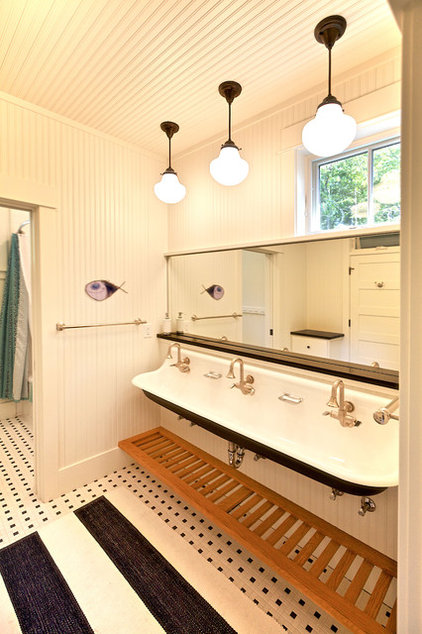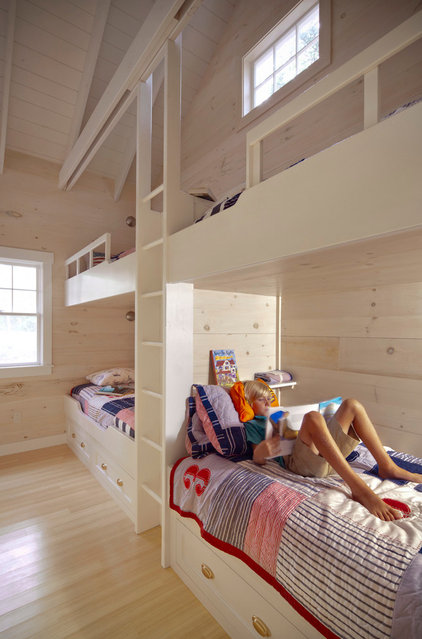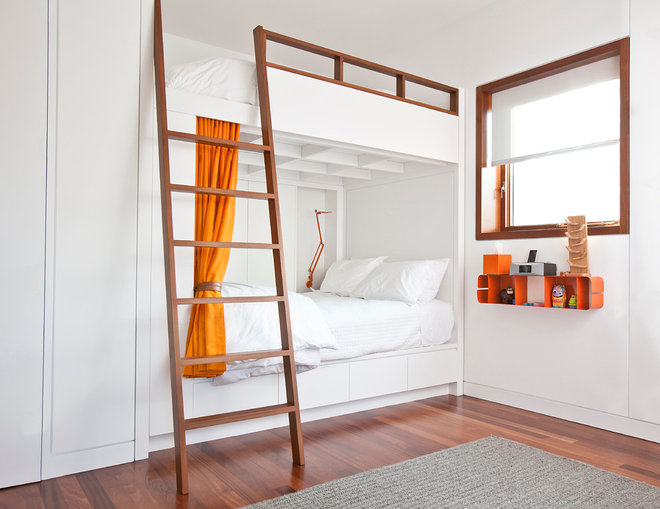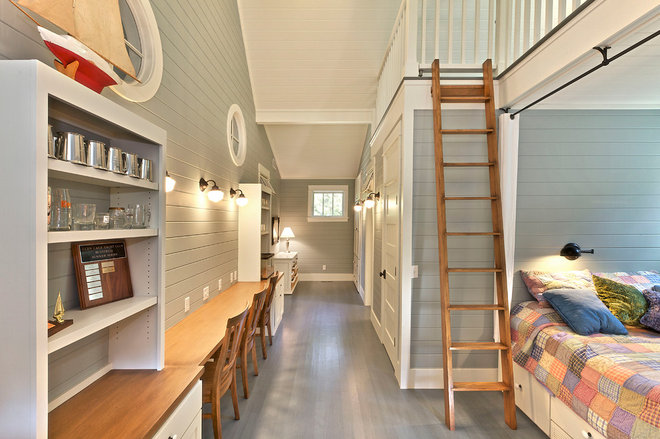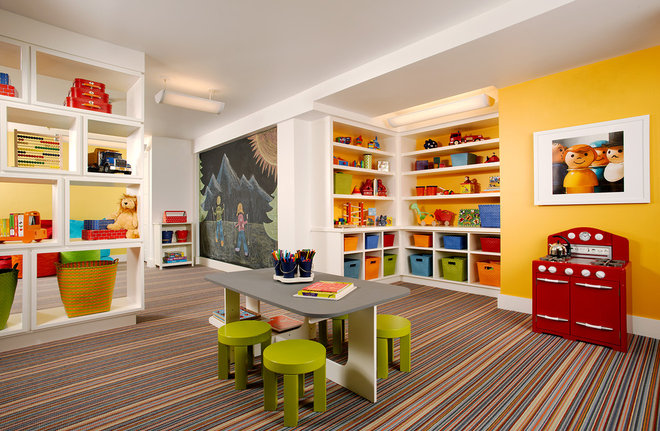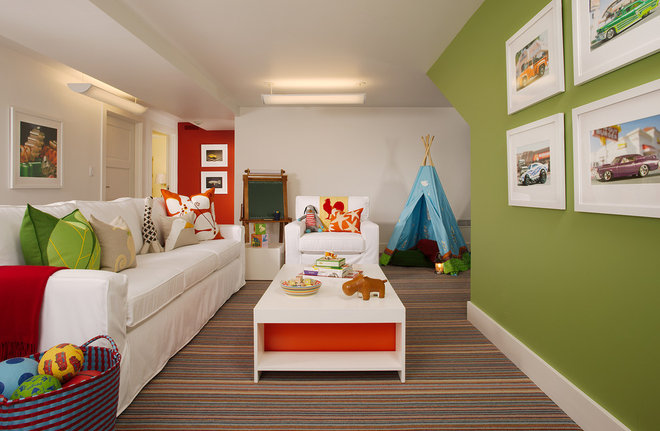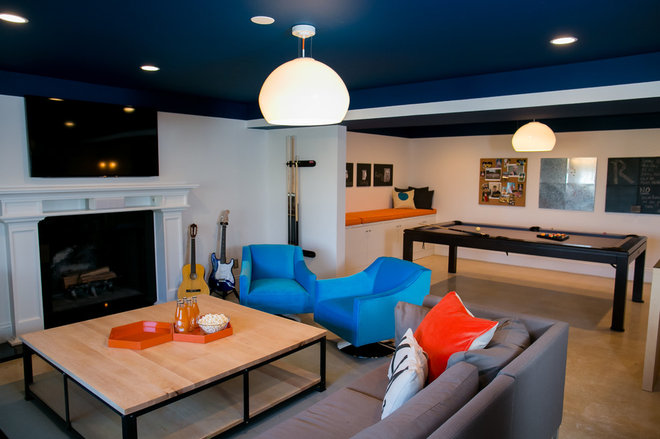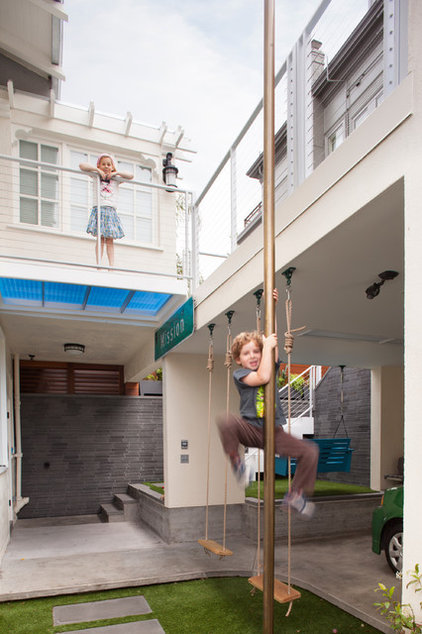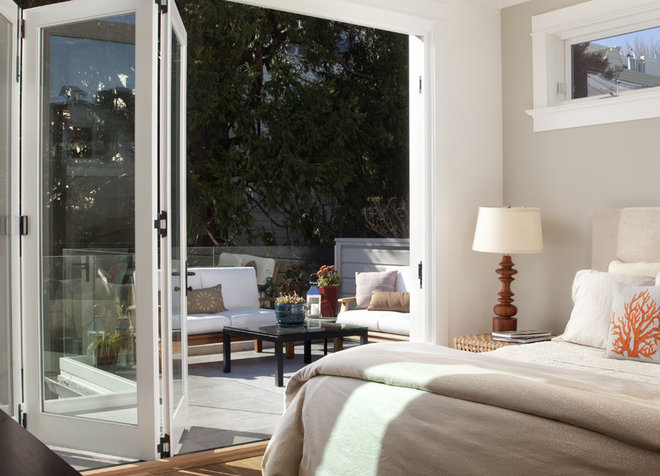15 Home Ideas Fit for a Crowd
Below you'll find 15 things every big family should think about having at home.
|
1. A chaos-free entry. Tame
frustration in the mornings and any time by setting up an entryway
organization system and sticking with it. Provide a hook, basket and
shelf for each member of the household, and make sure all children and
adults shed their stuff before coming into the house.
Think you don't have enough room for lockers? Try to make room: The order a system like this creates is worth stealing space from an adjacent room. If there is any way you can create room, go for it. You won't be sorry. |
Organizing tip: Keep healthy snacks on lower shelves where kids can reach them easily; stow treats (aka junk food) on upper shelves, tucked inside opaque baskets.
|
3. A kitchen that fits a crowd. Everyone
ends up hanging out in the kitchen. Embrace this fact and make space
for the whole crew at a spacious island or kitchen table. The one shown
here is 15 feet long! If you have younger children, consider keeping the
island stove-free for safety. Keep a few step stools on hand so younger
family members can help out with dinner prep.
Design tip: Choose finishes that are easily cared for. It sounds simple, but it can be easy to get carried away by a gorgeous finish and overlook the drawbacks. An engineered quartz, like Caesarstone, has a luxurious look similar to marble and other stones, but you won't need to worry about stains. |
|
4. An open floor plan.
There is a reason families prefer open floor plans — you can keep an
eye on the whole brood from just about anywhere. If you are house
hunting, you have the opportunity to seek an open plan from the start.
If you are settled into the home you live in now, you may still be able
to knock down a wall or two to open up the space.
Design tip: Take a cue from this house and define a comfy family nook within a larger space with a long, low shelving unit. The shelves even contain the TV, so no one has to stare at the big black box from all over the house. |
|
5. Self-help stations. Involve even the youngest family members by putting table
setting supplies within reach in baskets and bins. Bonus: Labeled
baskets help kids learn to put things away, so they can help out with
cleanup, too.
|
Design tip: If you have a large laundry room, consider adding a spacious folding table with a shelf below. You can stow baskets of sorted clothes below, and the top can double as a craft or sewing space when you are not folding clothes.
As an alternative to bunks, consider placing daybeds end to end along one wall. During the day the beds can be used as one long couch when friends come to play.
|
In shared rooms it is important
to give each child a feeling of ownership over his or her corner of the
room. Recessed nooks on a top bunk provide a place for a small lamp and
personal items. Wall-mounted shelves or brackets are another great
option for that nighttime glass of water and bedtime story. Curtains
help darken the space and provide privacy.
|
|
10. A shared study space that works. If
your kids share a room, space is probably already tight. So where do
you fit that much-needed study area? Free up a wall by consolidating
beds (with bunks or daybeds), then use that free wall for one long,
shared desk. It may be helpful to put a partition between each child's
area ... otherwise there may be some serious turf wars over desk space.
Create a Study Space the Kids Will Love |
|
11. A well-organized playroom.
It's all too easy to let the playroom become a dumping ground for toys
and kids' stuff that you just don't know what else to do with. Create an
inspiring space with fresh materials and open-ended toys within reach
instead, and you may find fewer claims of "I'm bored!" Use
colorful, labeled bins and see-through baskets on shelves to store toys
in. Provide a kid-size worktable with chairs and easy access to basic
materials, like crayons and paper.
If you don't have a spare room to use as a playroom, consider giving your kids the choice to share bedrooms and turn one bedroom into a playspace. Design tip: Pick a floor covering that is soft but flat — aim for something kids can sit on comfortably and that won't make their block and Lego creations tip over. |
|
12. A spot where grown-ups can hang out while the kids play. One
of the reasons playrooms end up the way they do (read: a total
disaster) may be that with nowhere for grown-ups to sit, they end up
being kid-only zones ... and we all know how fond kids are of cleaning
up.
Incorporate a love seat and table, and you can hang out and chat, read or (let's be honest here) check email on your phone while the kiddos play — and be there to step in as needed. |
|
13. A lair for teens. Have
a finished basement, attic or shed? If you have teenage kids, you might
want to think about converting the space into a teen hangout zone.
Think couches, TV and maybe a game table or two. If you're really lucky,
they might even let you in to play in a Ping-Pong or foosball
tournament.
|
Home projects and family activities can be just as joyful, too: Have each child paint a stair riser, make a family to-do list at the beginning of each season or let your kids pick a cause and volunteer together.
|
15. A kid-free zone. All parents need a space to call their own, a restful, toy-free room decked out with no regard (well, maybe a little
regard) for stain resistance and durability. Think high-thread-count
sheets, soft rugs and glass doors to your own private patio. Guarding your personal space as a parent can be insanely difficult, but while you probably will still want to make an exception for those sweet
good-morning snuggles in the "big bed," there are some ground rules you
could begin to lay out. "Knock before entering" would be a good start.
|
